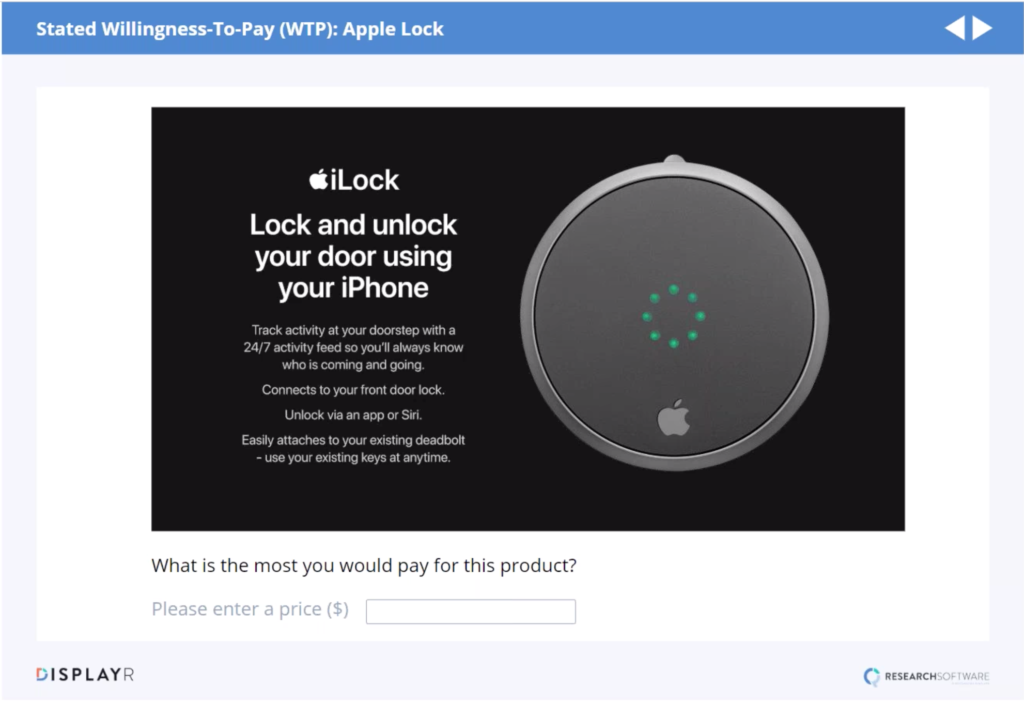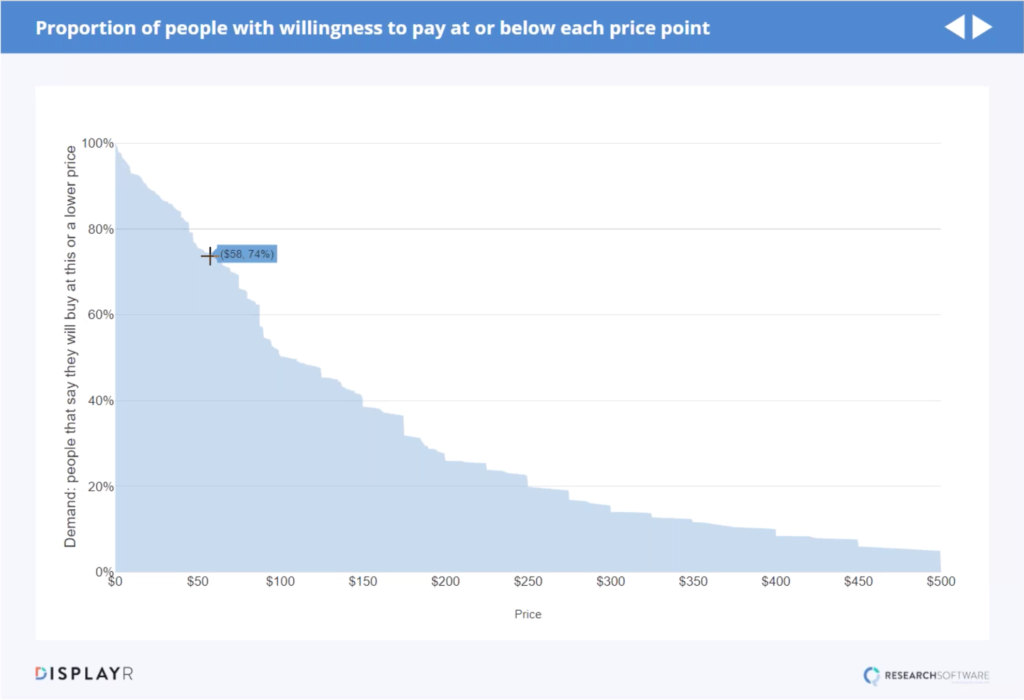
Using Stated Willingness-To-Pay in Pricing Research Studies

Of our six approaches to pricing research, Stated-Willingness-to-Pay is the third approach.
Economic theory says that the way to figure out how to price something is to know the most at which people will pay for a product. In economic jargon, this is referred to as the willingness-to-pay of each person in the market. The simple approach to this technique is by asking them directly—for their stated willingness-to-pay.
Below is an example of this simple approach by asking people how much they’d be willing to pay for an Apple iLock.

As you can see in the chart below, the very useful thing about Stated Willingness-to-Pay is the way you can show how many people in a market will pay for a product at different price points. For example, if you look at the chart roughly 77% of the market stated a willingness-to-pay at least $50 or more for the Apple iLock, provided the data is good.
Note the little cliffs in the chart, those are known as price shelving. These cliffs reflect the people who provided more rounded answers.

When we multiply the curve in the chart by the size of the market which, in this case, is the number of households, we then have a good old fashion demand curve. If you’ve studied economics you’ve probably seen the axes on the chart flipped, but they are interpreted the same way.
Once you have your demand curve you can use basic economics to find out the profit-maximizing price. In this case here, let’s say we have a product with a fixed cost of $18 million and they cost $200 per unit to create. This then means that we would want to set the price of the product at, at least $399.50 to make a profit of $2.5 billion.
One of the key points about Displayr is that you can demonstrate these things interactively where clients can input cost assumptions while you present or later on if they don’t want to share information with you.
The Stated Willingness-to Pay technique all hinges upon the ability of people to give us high-quality data. An important question to ask before taking this approach is “can they actually and honestly answer with the highest cost that they will pay for something?”
For more examples on the other pricing research techniques see: Price Salience, Price Knowledge/Awareness, Price Sensitivity Meter, Random Assignment, Choice-Based Conjoint.




